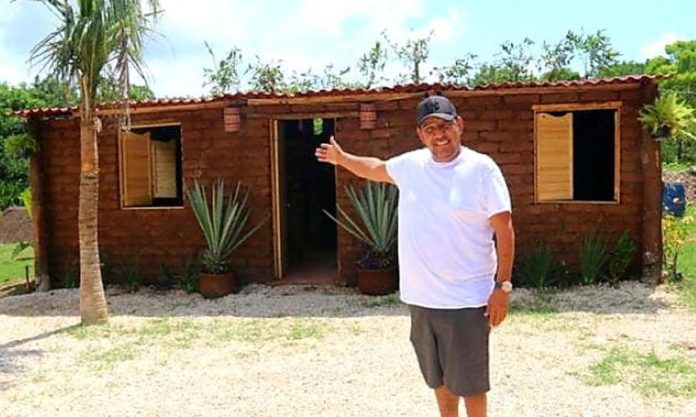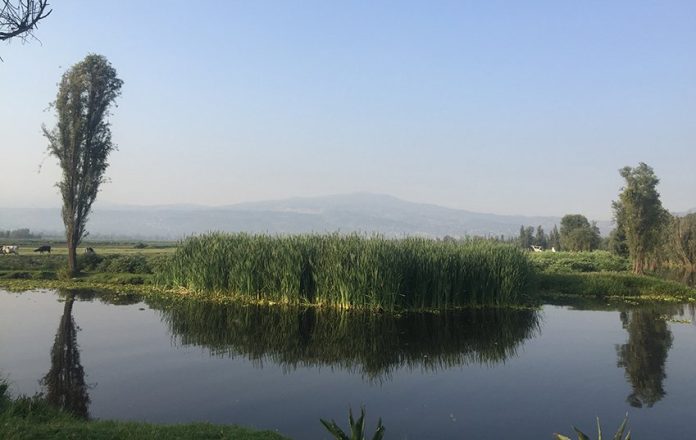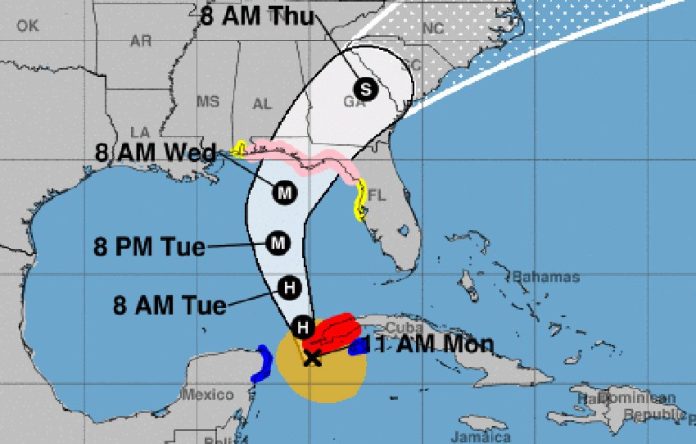Arriving at a rather off-the-beaten-track pier in Xochimilco on a fresh Sunday morning before sunrise was an adventure in itself.
I had only been to the canals of Xochimilco in southern Mexico City in the daytime to be greeted by the multicolored boats called trajineras bobbing merrily on the water.
This time I arrived at a pier with just one or two motorized boats beached on the shore. The sky had a kind of pre-dawn hazy lightness and the birds were calling out that the day was beginning.
I was soon greeted by the others who were heading out with me on the calm, early-morning waters of this tranquil area of the canals, waterways that were an extension of Tenochtitlan, the ancient city of the Aztec or Mexica people. So important are these waterways to Mexico’s history that they were declared a UNESCO World Heritage site, along with Mexico City’s historic center, over 30 years ago.
Jumping on a low-key motorboat, I realized that this trip was going to be very different from the other rides I had taken in Xochimilco. There were no micheladas or mariachis on this strip of the canal. Instead, we had a list of birds to identify as we traveled along the water.
Despite being part of one of the biggest urban centers, Xochimilco is a nature lover’s paradise. The area is home to over 15 different types of duck alone.
Our boat created ripples along the otherwise still water, which began to reflect the colors of the sunrise, the trees a silhouette in front of the bright sun making its way into the sky. An elegant wading egret took flight before us, its huge white wings flapping hard before it glided to a stop on a fallen tree trunk. The scene was blissful, magical. A mist rose off the water as the dawn gave way to the day.
Soon café de olla was being passed around to keep the chilly morning air at bay. Its deep cinnamon flavor and sugariness woke up my senses, clearing away my own morning mist and bringing me to life.
I looked out all around me trying to identify the birds on my list. I am no bird specialist and relied on our guide to help me name the many species I was seeing. I was distracted at times, staring at the water with a childlike hope of seeing an axolotl — a type of salamander — in the wild.
It’s a hope I have whenever I am in Xochimilco but these fascinating amphibians, which are native to the area, live in the darkest parts of the waters and are in decline so spotting them is almost impossible.
Traversing the waters, and searching for birdlife, I watched as the surrounding trees gave way to a part of the bank that looked like a pasture. Sure enough, Xochimilco is also home to a cuenca lechera, or dairy farm.
Here, cows roam on the banks next to the water. Later our boat would have to make way for a canal boat full of bulls to pass by. Quite the contrast to making way for a boat full of revelers on the more populated canals.
Not far from the dairy fields, our boat took us down a narrow waterway, passing the infamous Island of the Dolls, and soon enough we were disembarking on to the chinampas. These are manmade fertile raised beds constructed in Mesoamerican times that were used to grow food for the 300,000 inhabitants of Tenochtitlan. I love imagining the canoes gliding along rivers to transport food to the people some 500 years ago.
Nowadays, a big movement is under way to protect and reclaim the chinampas and once again provide food for the people or the now somewhat larger city nearby. Many of the best chefs in Mexico City source the produce for their award-winning restaurants from the chinampas and more and more residents have signed up to receive organic produce boxes from the area.
On the banks, we saw lines of lush and abundant vegetables growing all around, everything from multiple types of tomatoes to different leafy greens. All of the crops are cultivated using a non-chemical fertilizer that they make onsite, using only bioproducts that they can obtain close by.
After exploring the allotments, I would get my wish to see an axolotl. We found a place in the shade and a large water-filled box was opened and we could observe this majestic amphibian with its crown of gills swimming before us.
This axolotl was part of a conservation program. The animals are suffering due to the increased temperatures of the water and a reduction of their habitat due to the intrusion of urban sprawl. However, local organizations are working to regenerate the habitat of the mighty axolotl, which plays an important role in Mexica mythology.
Its habitat is the dark, muddy areas of the water hence the axolotl are associated with Xolotl the god of death and the underworld in Mexica mythology. A natural antibiotic that is found in the skin of the axolotl allows them to stay in the murky depths without being susceptible to illness. They are a truly unique and special creature that could entirely disappear by 2020 if measures aren’t taken to protect them.
Bespoke Mexican tour company Journey Mexico wants to help in these preservation efforts. Their creation of an experience to explore these lesser known banks of Xochimilco, accompanied by scientists and the founder of a local non-profit, will help to raise awareness and funds for axolotl protection and conservation efforts in the area. Part of the fee paid by guests will go straight back to the projects on the ground.
Lillian Aviles, the director of business development for Journey Mexico, learned about the possible extinction of axolotls from her son who was working on a school project, and she wanted to do something.
“Our product team has been working on creating a series of sustainable travel experiences and I proposed this one,” she told Mexico News Daily. Working together with a local NGO and a naturalist guide, they developed a tour that would be informative and fun and have a sustainability focus.
The tour, much like the one I took, will start right before sunrise, allowing visitors to birdwatch and enjoy the tranquility of the waters.
In addition, they will have a chance to sample the fresh ingredients from the ancient chinampas by partaking in a lunch hosted by local chefs from the community. They will not only learn about the rich history of this area but also find out more about conservation efforts while contributing to them in an enjoyable way.
Travel is often criticized as being a contributing factor to environmental issues, but many companies are looking for ways to create sustainable practices.
“We can offer guests unique experiences while protecting the environment, its people and culture,” Aviles said. “It’s all about bringing like-minded people together to support the community and environment while offering a unique and unforgettable experience to our clients.”
And with all this increased focus on the chinampas and the axolotl there is hope that this incredibly important area of Mexico City and this majestic animal will continue to thrive for many more centuries to come.
• To find out more about this and other experiences with Journey Mexico, visit their website.
Susannah Rigg is a freelance writer and Mexico specialist based in Mexico City. Her work has been published by BBC Travel, Condé Nast Traveler, CNN Travel and The Independent UK among others. Find out more about Susannah on her website.









